Microservices in financial systems improve reliability by breaking complex systems into manageable services, each communicating through APIs. While beneficial, transitioning poses challenges like resource management, data consistency, and cultural shifts. Financial institutions can overcome these by starting small, investing in automation, embracing DevOps, and implementing continuous monitoring for successful microservices adoption.
Microservices enable financial institutions to develop, deploy, and maintain reliable applications by breaking large and complex systems into individual services. Each of these services performs a specific task while communicating with each other through language-independent Application Programming Interfaces (APIs). This setup offers better maintainability and manageability.
For instance, banks or financial institutions don’t need to be concerned about dependencies on other services, such as payment services, customer management services, core banking services, etc., if they want to update just the KYC microservices.
While a microservices architecture provides numerous benefits over a traditional monolithic system, the transition to microservices is not without its challenges.
In this blog, you will learn the complexities of implementing microservices in financial systems, key challenges, and practical solutions to overcome them.
Challenges to Microservices Architecture Implementation in Financial Services
Below are some notable challenges that banks and other financial institutions may encounter while implementing the microservices architecture- and practical solutions.
1. Complexity in Resource Management and Monitoring
Microservices architecture can have hundreds and thousands of individual independent services. Managing this multitude of services manually is virtually impossible and requires sophisticated orchestration and monitoring tools for the following:
- Determine the health status of each service
- Measure the performance of each service
- Troubleshoot and debug individual service
To overcome these,
- Financial institutions must invest in DevOps practices and platforms that can handle the complexity of microservices.
- Financial institutions can also adopt orchestration tools like Kubernetes to manage and scale microservices effectively.
As per this Gartner report, almost three-quarters (74%) of respondent organizations are currently using a microservices architecture and 23% of leaders’ organizations plan to adopt it.
2. Data Consistency Issues
Ensuring data consistency across distributed and independent services is one of the challenges. In a microservices architecture, each microservice has its own data model and manages its own data. This data also moves between microservices using protocols, such as REST.
- Financial systems must implement distributed transactions or event-sourcing strategies to maintain data integrity.
- A centralized logging and monitoring system can also help mitigate consistency issues and provide real-time insights into service operations.
3. Cultural and Organizational Changes
Adopting microservices often necessitates a cultural shift within the organization. Teams need to embrace new development practices, and there may be a need for upskilling to handle the complexities of microservices.
- Banks or financial institutions need to invest in training programs.
- Ensure a DevOps culture to ease the transition and alignment with business goals.
Best Practices for Implementing Microservices in Financial Systems
To successfully transition from monolithic systems to microservices, financial institutions should follow these best practices:
1. Start Small and Go Slow: Begin with Non-Critical Services
When implementing the microservices architecture in your financial institution, it is recommended to pilot the microservices approach by beginning with non-critical services. This step is crucial, as financial institutions must be careful while handling customer data and large transaction volumes.
For example, start with peripheral services such as user profile management or notifications.
They can gradually move to payment processing, fraud detection, etc., to allow teams to experiment, learn, and refine the methods without the risk of disrupting critical business operations.
Such a phased rollout can help mitigate the risk of any potential system failure that could lead to financial and reputational damages.
According to Gartner, almost half (49%) of respondent organizations using microservices currently manage fewer than 100 microservices, and 23% manage between 100 and 300. Only 3% manage over 1,000 microservices.
2. Invest in Automation
Automation is the backbone of a successful and reliable microservices architecture. It accelerates the development and deployment process and can minimize human errors that could lead to vulnerabilities or failures.
The organization can utilize continuous integration and continuous development (CI/CD) pipelines to automate the testing, integration, and deployment phases.
CI and CD are the most common DevOps practices used by 80% of organizations – as per DevOps Report 2023.
By doing this, organizations can ensure that any changes in the code are tested thoroughly before deploying the application or microservice. This approach helps reduce the chances of introducing bugs into the production environment.
A study conducted by DORA found that the change failure rate was 50% lower in organizations using CI/CD procedures than in those that did not. Furthermore, by detecting and resolving issues in real-time, CI/CD pipelines improve overall system reliability and enable quick issue resolution.
3. Embrace DevOps
DevOps helps promote collaboration between development and operations teams, which helps rapid development, testing, and deployment cycles for microservices. Fostering seamless cooperation between the traditionally siloed teams can help bridge the gap and ensure a successful implementation of microservices architecture.
It also helps in the following ways:
- Encourage shared responsibilities, which is crucial for continuous improvement and quick resolution of issues on microservices architecture.
- Achieve faster time-to-market
- Boost system reliability
Adopting DevOps methods gives an organization a 2.5x greater chance than its rivals to surpass profitability, market share, and productivity targets. This underscores the competitive edge that comes with utilizing DevOps methodologies. [Source]
4. Continuous Monitoring (CM)
CM is the final stage in the DevOps pipeline and can help organizations achieve performance and scalability. It can make organizations more efficient and agile and bring focus on continuous integration and delivery.
Maintaining system health and performance is essential to microservices architecture, especially when hundreds or thousands of services are running simultaneously.
Continuous and real-time monitoring using tools that provide detailed metrics on the error rates, resource usage, service latency, etc., can help keep an eye on each service’s health and performance.
While monitoring several components spread across different systems and clouds can be challenging, it helps identify and resolve issues before they cause an outage.
According to a Forrester study, there is a 9.9% return on investment (ROI) for every dollar spent on user experience. By collecting user comments following updates, pinpointing performance bottlenecks, and enabling developers to promptly address severe defects, a continuous monitoring tool can enhance the user experience.
Conclusion
By transitioning to a microservices architecture financial institutions can improve the agility, scalability, and resilience needed to thrive in today’s fast-paced environment. However, implementing microservices architecture is fraught with challenges that can be mitigated by following best practices. Some of these include starting small, investing in automation, embracing DevOps, and ensuring continuous monitoring. By following these critical steps, financial institutions can successfully implement microservices.
To discover how Anaptyss can support your organization’s journey to microservices, reach us at info@anaptyss.com


















